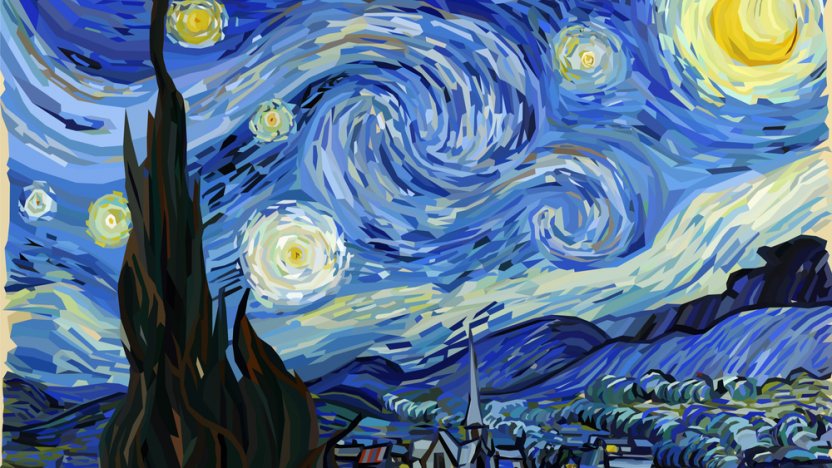Getting Started on an Aesthetic Trip Through the Lyrical Analyses of Nature in Impressionist Landscapes
In the realm of art history, the Stylist movement stands out as a pivotal duration that revolutionized the means nature was depicted on canvas. Artists such as Claude Monet, Camille Pissarro, Edgar Degas, Berthe Morisot, and Vincent Van Gogh recorded the essence of the all-natural world through their distinct interpretations, developing landscapes that transcend plain graph. Each brushstroke, each play of light and darkness, and each color selection in their jobs talks volumes about the artists' deep connection to nature and their ability to convert its elegance onto the canvas. As we explore the lyrical analyses of nature in Impressionist landscapes, we are welcomed to submerse ourselves in a globe where fact and feeling link, using a glance right into the artists' profound admiration for the all-natural world.
The Exciting Brushstrokes of Claude Monet
Claude Monet's mastery of brushstrokes goes beyond mere method, imbuing his landscapes with an ethereal top quality that enthralls and mesmerizes customers - trump art. His ingenious use color and light, incorporated with his distinctive brushwork, develops a feeling of motion and life within his paints. Monet's popular collection of works portraying water lilies and his iconic haystacks display his ability to capture the short lived impacts of light and environment

Embracing Light and Darkness With Camille Pissarro
Personifying a similar respect for the interaction of light and darkness, Camille Pissarro's creative vision unfolds as an unified expedition of the environment's luminescent subtleties. Pissarro, an essential figure in the Impressionist activity, masterfully captured the vibrant connection between light and darkness in his landscapes. His experienced use of color and brushwork permitted him to convey the refined shifts in light that specify different times of day and seasons.
Pissarro's paintings typically include dappled sunlight infiltrating fallen leaves, casting intricate patterns of light and darkness on the planet listed below. In works such as "Hoar Frost, the Result of Snow, Pontoise," Pissarro skillfully illustrates the crisp brightness of winter sunshine compared with the trendy shadows that specify the snowy landscape. By accepting both light and shadow in his compositions, Pissarro welcomes customers to immerse themselves in the all-natural appeal and transient effects of light worldwide around them.

Via Pissarro's works, we are reminded of the transformative power of light and shadow, welcoming us to stop and value the fleeting minutes of appeal present in the daily landscapes that surround us.
A Symphony of Color Styles by Edgar Degas
Edgar Degas manages a dynamic harmony of shades in his masterful art work, instilling his structures with a vibrant interplay of shades that astound the viewer's stare. Known mainly for his ballet professional dancers and intimate scenes of Parisian life, Degas skillfully manipulated colors to communicate mood and movement in his paintings. trump art. His use vibrant, contrasting shades and subtle tonal variations created a sense of web link depth and vibrancy within his works
Degas' shade scheme often included abundant blues, deep environment-friendlies, and cozy oranges, which he used with positive brushstrokes to record the essence of his topics. Whether portraying a ballerina mid-performance or a team of close friends speaking at a cafe, Degas' shades not just portrayed the scene however also stimulated a feeling of emotion and power.
In Addition, Degas' trial and error with light and darkness included an added layer of complexity to his color make-ups, enhancing the general ambience of his paints (trump art). Through his proficient adjustment of color, Degas created a visual symphony that proceeds to reverberate with customers today
Checking out Nature's Calmness With Berthe Morisot
Berthe Morisot's artistic vision offers a calm separation from the lively shade harmonies of Edgar Degas, as she catches the harmony of nature in her evocative landscapes. Recognized for her fragile brushwork and intimate representations of day-to-day life, Morisot's landscapes emanate a feeling of peace and consistency.
Morisot's paintings typically feature soft, low-key tones that communicate a feeling of calmness and calmness. Her jobs, such as "The Cradle" and "Summer season's Day," showcase her ability to catch the refined appeal of nature in such a way that is both reflective and comforting to the audience.
Unlike several of her Impressionist equivalents that concentrated on vibrant structures and vibrant colors, Morisot liked to develop gentle, reflective scenes that invite the audience to mirror and stop. With her skillful use light and darkness, Morisot creates a sense of tranquility that resonates with the customer on a deep emotional degree.
The Emotional Landscapes of Vincent Van Gogh
Vincent Van Gogh's landscapes vividly communicate a deepness of feeling through their dynamic brushwork and meaningful usage of color. The Dutch post-impressionist musician is renowned for his capability to catch raw and intense feelings in his paintings, going beyond conventional representations of nature. Van Gogh's turbulent individual life, marked by psychological wellness battles, greatly affected his art, infusing his landscapes with a feeling of anxiousness, sorrowful, or exuberance.
In works such as "Starry Evening" and "Wheatfield with Crows," Van Gogh's swirling brushstrokes and vibrant shade selections evoke an extensive psychological reaction from viewers. The stormy skies and flustered landscapes in his paints reflect his inner chaos and emotional disturbance, inviting audiences to explore the complexities of his mind.
Van Gogh's distinct visual language, identified by exaggerated point of views and vibrant usage of color, develops landscapes that resonate with audiences on a deeply emotional degree. Through his art, Van Gogh welcomes us to see nature not equally as an exterior fact however as a mirror of our innermost feelings and emotions.
Conclusion
In verdict, the impressionist landscapes of artists such as Claude Monet, Camille Pissarro, Edgar Degas, Berthe Morisot, and Vincent Van Gogh use a one-of-a-kind and exciting visual analysis of nature. With their use of brushstrokes, light, shade, and feeling, these artists have actually produced a symphony of pictures that evoke Learn More Here a feeling of peacefulness and beauty in the all-natural world. Their jobs continue to motivate and captivate visitors with their lyrical interpretations of the landscapes around us.
Each brushstroke, each play of light and darkness, and each color option in their jobs speaks quantities about the musicians' deep link to nature and their capacity to translate its charm onto the canvas. His ingenious usage of color and light, incorporated with his distinctive brushwork, creates a sense of movement and life within his paintings. His experienced use of color and brushwork permitted him to convey the subtle changes in light that specify various times of day and periods.
